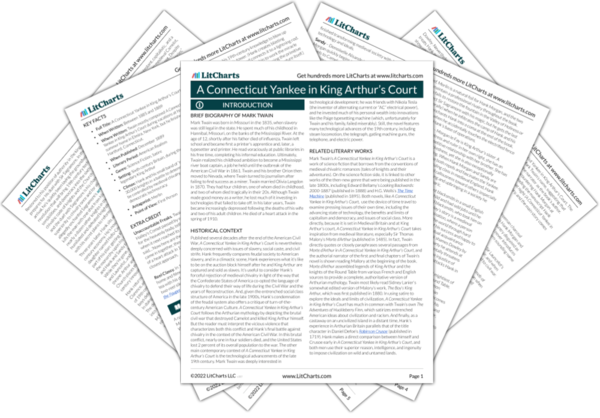Since the medieval court of Arthur represents the Old Order, even when ostensibly appreciating its good sides, Hank subtly denigrates it. Thus, he appreciates the knights’ storytelling but finds the audience too trusting. Further, without any evidence beyond his own assumptions, he distinguishes between his own mental fortitude (the result of reason) and the other prisoners’ stoicism (which is like a trick taught to an animal). In dehumanizing the medieval people, Hank compares them not only to animals but to Native Americans—a racist association that highlights the marginalized position of these nations in 19th-century America and suggests his own imperialistic ambition to colonize and reshape the new (to him) world of medieval England.
